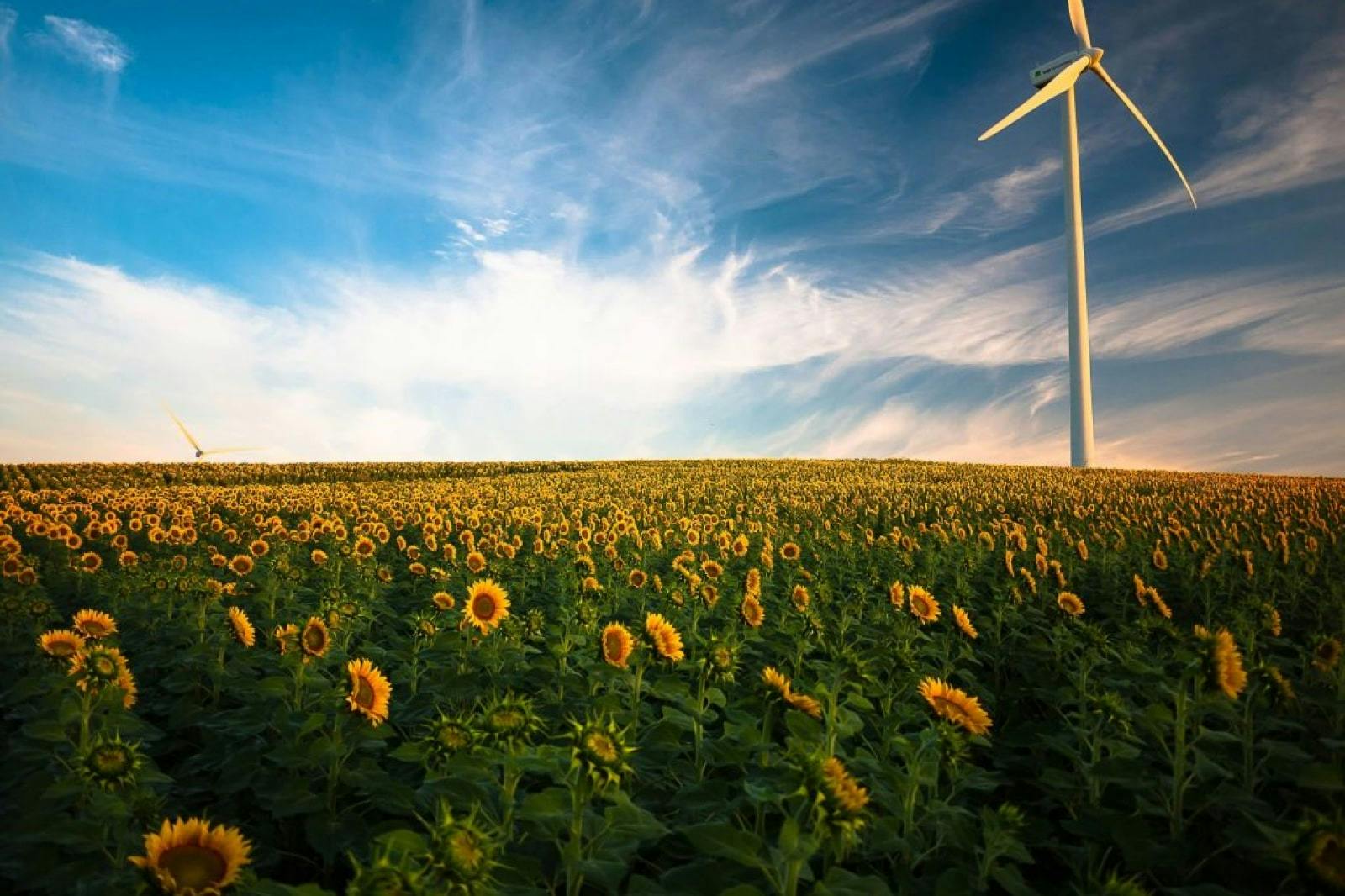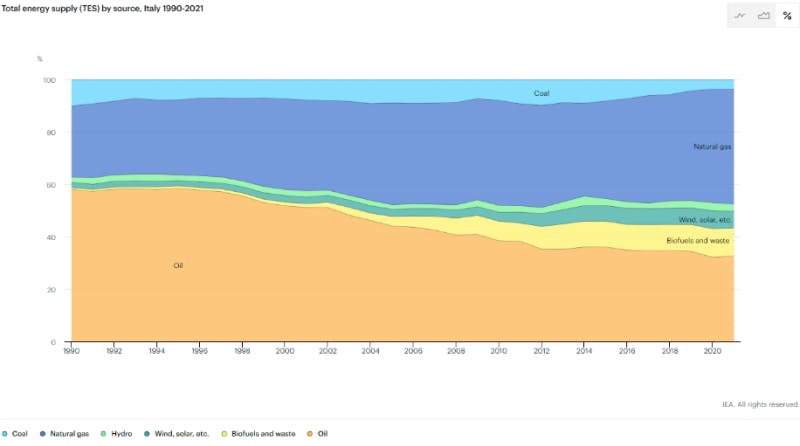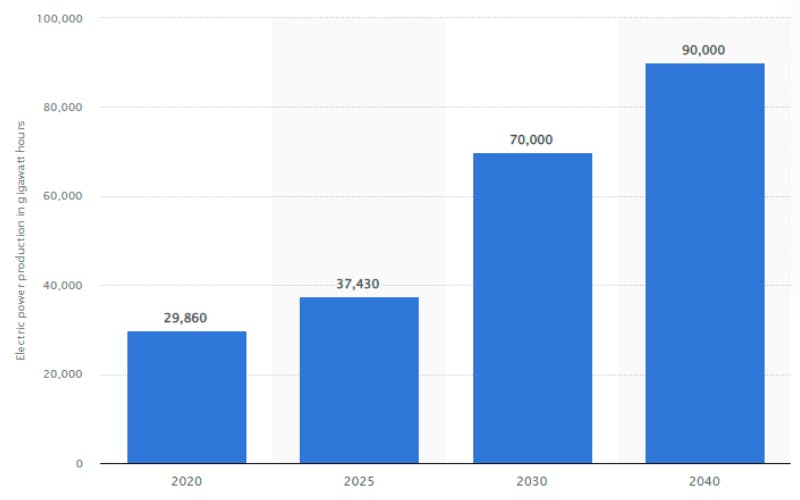Italy's Renewable Energy Landscape: An Overview
24 Jan 2023

The renewable energy sector in Italy is at an exciting juncture, as the country looks to address both domestic energy demand and international requirements to reduce carbon emissions.
This is happening in the context of a complex global energy landscape, where external factors such as the war in Ukraine and the resulting European energy crisis, as well as EU legislation aimed at reducing carbon emissions, are reshaping the market.
Furthermore, Italy's diverse topography provides significant advantages for the development of renewable energy projects. From the strong winds of the coastal regions to the abundant sunlight in the south-central region, and geothermal resources in Tuscany, Campania, and Calabria, the country is well-positioned to take advantage of a range of renewable energy sources.
This article will delve into Italy's renewable energy landscape, providing a comprehensive overview of the current state of the market, government policies, and incentives, as well as the potential for future growth. Overall, the Italian renewable energy landscape offers a unique opportunity for both domestic and international investors, and this guide aims to provide a clear picture of the potential in this field.
An Overview of Italy’s Energy Landscape
Italy is the fourth-largest energy consumer in Europe, with fossil fuels accounting for around 80% of energy consumption and renewable energy sources 20% of consumption.
Of the 20%, hydropower is the largest renewable contributor at 38%, followed by solar power at 23% and wind power at 13%.
Italy is also the only G8 country without nuclear power after the last two nuclear reactors were shut down in 1990. A new poll in 2021 confirmed that an overwhelming majority of Italy's population is against nuclear power, placing greater emphasis on the need to identify alternative forms of energy production. Coal power is also being phased out, with a goal for all coal power plants to close by 2025.

Credit: iea.org
In recent years, wider geopolitical factors including the Coronavirus pandemic and the European energy crisis resulting from Russia’s involvement in the war in Ukraine, have demonstrated how exposed and reliant Italy is from an energy perspective.
It has also expedited the shift towards renewable forms of energy, something that Prime Minister Giorgi Meloni has echoed through the continuation of renewable energy policies of the previous government, with grander visions of turning Italy into an “Energy hub of Europe” capable of becoming a significant energy exporter in the future.
The Ministry of Ecological Transition (MiTE) was established in 2021 as part of the Italian government to achieve the EU's green growth strategy. MiTE has set out a host of targets to achieve by 2030, this is covered in the following section of this guide.
The government has also laid out a series of incentives for the development of renewable energy with the goal of spurring on investment that includes, tax breaks for companies that invest in renewable energy projects, and subsidies for the construction of new renewable energy power plants.
Italian Government's policies promoting the development of renewable energy
As of 2021, the total installed power that is generated from renewable energy sources in Italy amounted to 58 GWs.
MiTE has set ambitious targets to increase the share of renewable energy in the country's total energy mix to at least 30% by 2030 and 55% in electricity generation.
Targets include:
- Reduce greenhouse gas emissions by 51% compared to the 1990 level, by 2030
- Reaching a target of 37% of gross final energy consumption from renewable sources by 2030
- Increase the share of renewables to 55% of power generation by 2030 and reach a solar capacity of 52 GW
- As per the National Energy and Climate Plan (NECP), Italy has set a goal to contribute 30% towards the European Union's (EU) 2030 target for renewable energy
- Install a significant amount of variable renewable energy capacity, estimated to reach up to 70 GW by 2030, to comply with the EU's Fit-for-55 package and to meet its own objectives for long-term reduction of carbon emissions
The Italian Government has several policies aimed at promoting the development of renewable energy projects in the country. Some of these policies include:
- Feed-in Tariffs: Government incentives for electricity production from renewable sources with a fixed price for each unit produced, providing stability for investors.
- Renewable Energy Certificates (RECs): Mechanism for renewable energy producers to obtain certificates for energy produced, which can be sold to end users or power suppliers legally required to purchase a certain amount of renewables
- Simplification of administrative procedures: Government measures to simplify and speed up the process for renewable energy project development, making it easier for investors
- Tax incentives: Tax credits, grants, and other fiscal incentives available to encourage investment and support the development of the renewable energy sector
- Public procurement: Government target of at least 18% of public budget spent on green procurement by end of 2021, with priority given to green contracts, tenders, and projects
- International investments: Italy's policies align with EU targets for reducing carbon emissions and providing support for the sector through fiscal incentives and administrative simplification, making it more attractive for international investors
In general, the Italian government is committed to increasing the share of renewable energy in the country's energy mix, and has implemented various policies to support the development of renewable projects aimed at attracting internal and international investment.
Leading sources of Italian based renewable energy
In 2021, Renewable energy sources represented 36% of Italy’s total electricity demand and 20% of the overall energy mix, specifically in terms of electrical power generation. Italy has a diverse range of renewable energy resources including solar, wind, hydroelectric, geothermal, and bioenergy.
Below we take a look at each in greater detail:
Hydropower
With the 4th largest hydropower installed capacity in Europe (22 GW), and the largest contributing renewable energy source in Italy, hydropower accounts for 38% of total renewable energy consumption of the country's renewable energy power generation.
It is widely distributed across the country, with the majority of hydropower plants located in the northern regions of Italy, such as the Valle d'Aosta, Lombardy, and Trentino-Alto Adige/Südtirol.
Solar Power
The country has a particularly strong potential for solar energy, which is backed up by a target of increasing solar capacity to 52 GW by 2030. Currently, solar power accounts for 23% of total renewable energy consumption in Italy.
In general, Italy ranks as the 6th largest producer of solar energy in Europe with a total installed capacity of around 24 GW as of December 2022.
In 2021, the Italian government introduced a Simplification Decree focusing on the removal of bottlenecks in the solar energy renewable energy production sector. As part of this decree, Terna has committed to investing £21.5 billion dollars over the next decade to improve the country's transmission links.

Credit: statista.com
PF Nexus has a range of articles that focus on solar development across Europe. From starting a solar farm to exploring the solar project development process, and discussing solar power project financing options, we're here to help.
Wind Power
When it comes to wind power, there exists great potential to increase the supply of wind generated energy. Wind power accounts for 13% of total renewable energy consumption in Italy with the majority of wind farms located in the southern regions of Italy, such as Campania, Puglia, and Sardinia.
Recent announcements by Terna, Italy’s electricity transmission system operator, suggests that towards the end of 2022, offshore wind projects connection requests reached a staggering 95 GWs. The development of offshore wind projects not only removes geographical barriers as discussed by Aurora Energy Research but also provides a solution to regional based concerns of wind turbines disturbing the visual aesthetic of rural areas.
Take a look at our detailed guide to find out more about wind power project financing.
Biomass
Biomass accounts for 4% of total renewable energy consumption in Italy generating circa 18 GW of energy as of 2021. Larger biomass plants and smaller scale facilities are particularly prevalent in the northern and central regions of the country with Lombardy, Emilia-Romagna, Trentino-Alto Adige/Südtirol, Veneto, and Tuscany all hubs.
These regions have a long history of forestry and agriculture, which provide a readily available source of biomass. Additionally, these regions have a relatively high population density, which makes it more cost-effective to generate energy from biomass locally.
Geothermal
Geothermal energy accounts for 2% of total renewable energy consumption in Italy. As of 2021, the country's generation capacity stands at 944 MW with key geothermal generation hubs located in the provinces of Pisa, Siena and Grosseto.
Opportunities for Investment
Italy's renewable energy sector offers a promising opportunity for international investment, with ambitious targets for increasing renewable energy use and reducing emissions.
As mentioned previously, the government has implemented policies and measures to support the growth of the sector, including feed-in tariffs, green certificates, and R&D funding. The country has significant potential for solar and wind energy, as well as a strong tradition in hydropower and geothermal energy.
Investment opportunities are diverse, from existing projects to new developments, and companies to equipment production. International investors can also participate in the green certificate market and benefit from favourable policies and regulations. The pandemic & recent European energy crisis has highlighted the need for increased investment in renewable energy, making the Italian market an attractive opportunity.
PF Nexus Overview
PF Nexus is creating global visibility and connectivity across renewable energy investment.
Our platform allows renewable energy finance and business development teams to operate in a smarter, more insightful, and more efficient way. Discover, research, shortlist, collaborate and discuss leads and outreach via a centralized platform.
Verified subscribers to our platform are able to choose between ecosystem and/or project marketplace access. Within the marketplace, clients can analyse the deal flow and connect with the project owners and transaction advisors behind them. Projects include utility-scale solar, battery, wind, and other sustainable and renewable infrastructure.
With over 4,000 users from 2,500 clean energy developers, investors, lenders, and advisors, the platform has seen surging growth as the energy transition pushes forwards and countries aim for Net Zero emissions.
Summary
Over the last few years, the global energy landscape has become ever more complicated. With solutions required to curb the global warming juggernaut needed, a global pandemic, and a European energy crisis, conversations around Italy’s energy independence have been thrust into the limelight.
Through the increased development across hydro, solar & wind power, the Italian government has set ambitious renewable energy targets for the country that will see it transition from an energy-dependent nation to a European renewable energy leader.
Sources:
- https://www.statkraft.com/newsroom/news-and-stories/2022/country-series-faster-progress-on-renewables-in-italy/